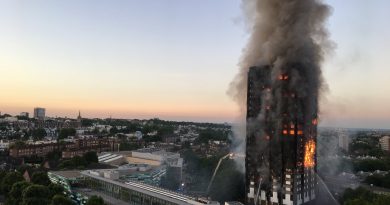The Building Safety Act and what it means for the fire industry
The Building Safety Act and what it means for the Fire Industry
It has been nearly five years since the devastating fire that destroyed Grenfell Tower, which saw the loss of 72 lives. Others lost their homes, possessions and loved ones, which changed the course of their lives forever. Since the tragic event, a public inquiry was conducted into the cause of the fire, leading the construction industry to come under heavy scrutiny.
In May 2018, Dame Judith Hackitt’s Independent Review of Building Regulations and Fire Safety found that “the regulatory system for high-rise and complex buildings was not fit for purpose.” 53 recommendations were put forward to change the way the industry works and create a safer living space for residents. But more importantly, Dame Judith Hackitt looks to drive a cultural change to make sure something this catastrophic never happens again.
After being introduced to parliament in July 2020, the Building Safety Bill was published a year later in July 2021 and was summarised by then-Housing Secretary Robert Jenrick as a “key step in an extensive overhaul to building safety legislation.”
On the 28th of April 2022, the Bill received Royal Assent meaning that now it has passed all the parliamentary stages in the House of Commons and the House of Lords, it will take a more prominent stance in the built industry as The Building Safety Act.
The Act will be directly responsible for buildings that are at least 18 metres tall or have seven storeys, with at least two residential units. It will also cover hospitals and care homes if they meet the specification.
The Building Safety Act (BSA) has named the Health and Safety Executive (HSE) as the Building Safety Regulator (BSR) to oversee the safety and performance of all buildings. With this, comes the duty to assist and encourage improvements in the built environment industry, holding powers of enforcement and sanctions.
Introduction of Gateways two and three will establish new requirements at key stages of design and construction. They are vital decision points within a project that must be passed before it can progress to the next stage, therefore, enabling a rigorous process where each stage of design and construction is monitored.
The Golden Thread, which is a live digital document that allows someone to understand a building and ensure that all information is up-to-date and accurate, will guarantee that any person responsible for any aspect of a project or building – dutyholders – work and findings are handed to the building’s owner upon completion. This will enable the right person to have the correct information regarding the safety of residents and building; ensuring risks are managed effectively. Failure to comply will see that those who are responsible for the safety of a building – the Accountable Person – are charged by criminal offence.
Finally, the introduction of The New Home Ombudsman, which will offer dispute resolution for buyers of new build homes against developers, enables the creation of a Construction Product Regulator (CPR), who will confront poor practice early on in a project and help guarantee that all construction products on the UK market are safe. They will work closely with the BSR to ensure the system of product testing and certification is being followed.
Both parties will assist in advising The Secretary of State on which products should be considered as safety-critical and consequently, remove products from the market that present any safety risks.
So, what does this mean for the Fire Industry?
The government are working to ensure that the Fire Safety Order 2005 (FSO), which places duty on individuals in an organisation – the Responsible Person – to identify, control and reduce the risk of fire, and the new building safety regime work effectively together. The Fire Safety Clause in the BSA amends the FSO to further strengthen fire safety measures for non-domestic premises, which include common parts of high-rise residential buildings subject to the BSA. The FSO and BSA will overlap in some respects, but through the cross-work of the government, by aligning these essential regimes it will ultimately work to further protect residents in high-rise residential buildings.
In a typical safety case report, the Accountable Person will ensure that they have a preventative approach for managing building safety risks. An aspect of this report will cover major fire and structural hazards for example, compartmentation. This includes key areas of passive fire protection: linear gaps and cavity fire stops, service penetrations and fire doors. HSE is urging anyone involved in the design or construction of a building to act now, at the earliest stage, and become proactive in the process of ‘building a safer future.’ The work the fire industry does now can help comply with this by raising more awareness of what early engagement in firestopping is; conducting CPDS to educate the industry; providing more tested details and technical support and offering on-site support.
Despite the Building Safety Act being law, many of the requirements will not come into force until 12-18 months after the Royal Assent as the industry prepares for the new regime. The government’s transition plan can be found here.
The risk of fire has decreased considerably over the years. However, the tragedy of Grenfell has shown that there is too much scope for “poor practice, poor culture, poor accountability and poor management.” The Building Safety Act brings an air of hope to survivors and their family members but ultimately, pays respect to the 72 victims. Without the Act, there would be no push for government reform and the risk of Grenfell happening again would be inevitable.




